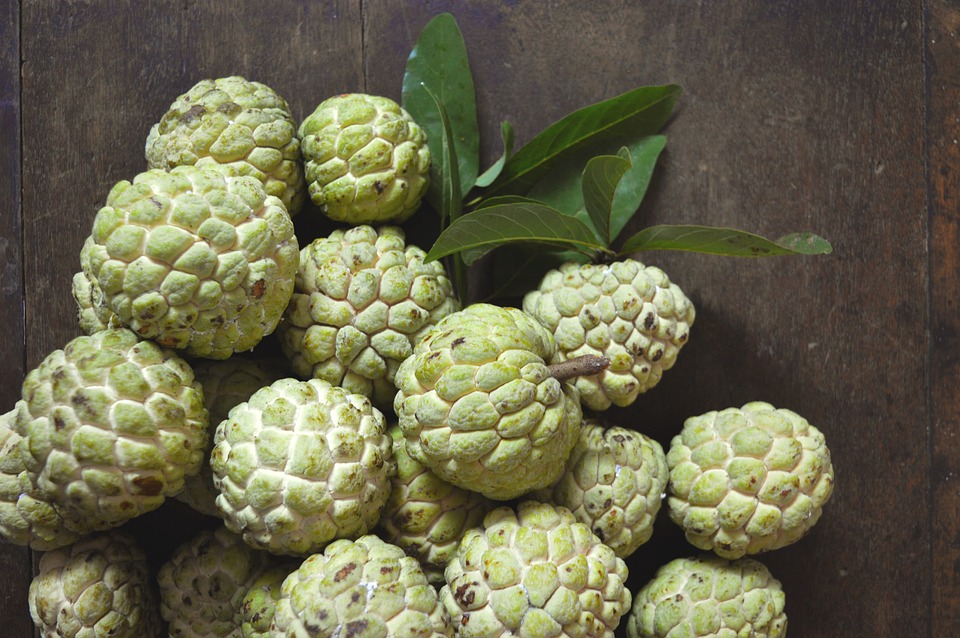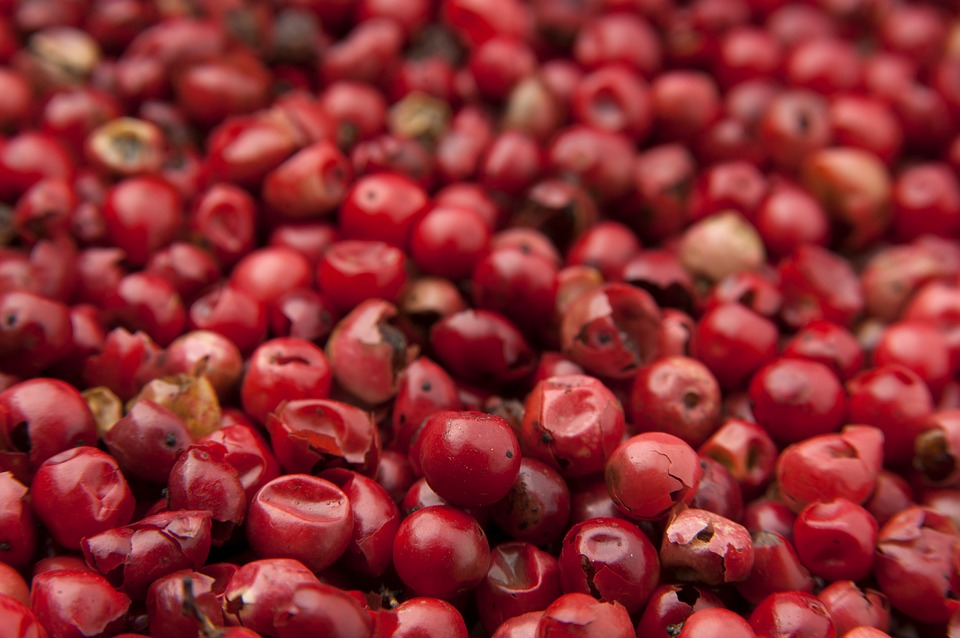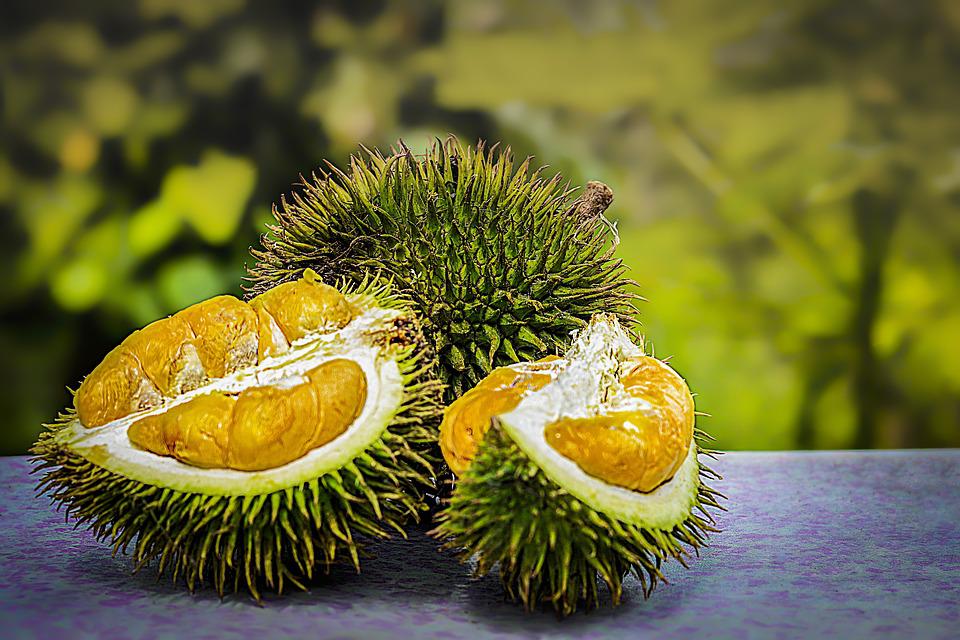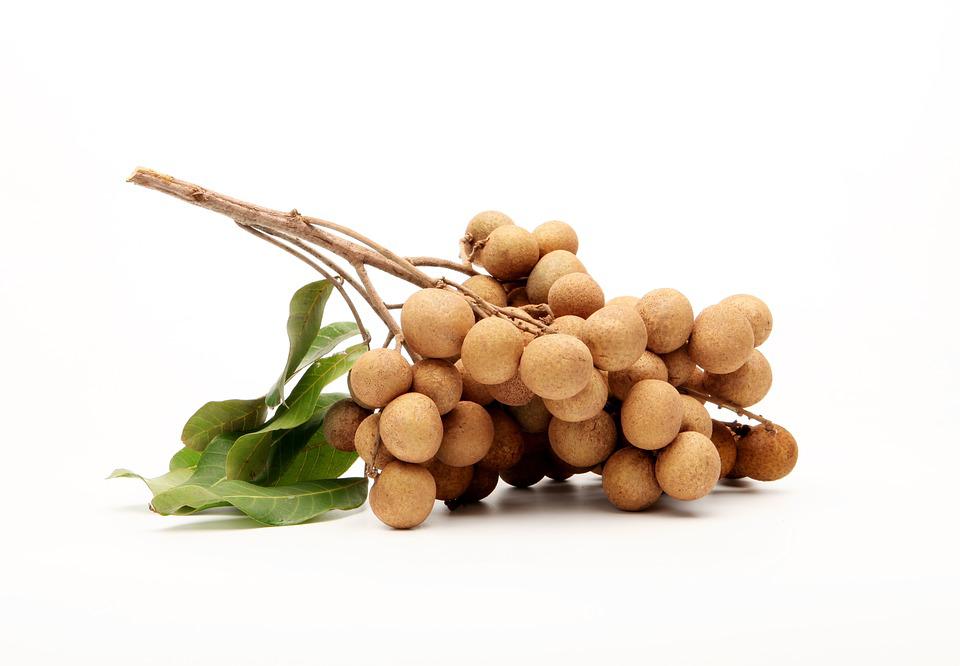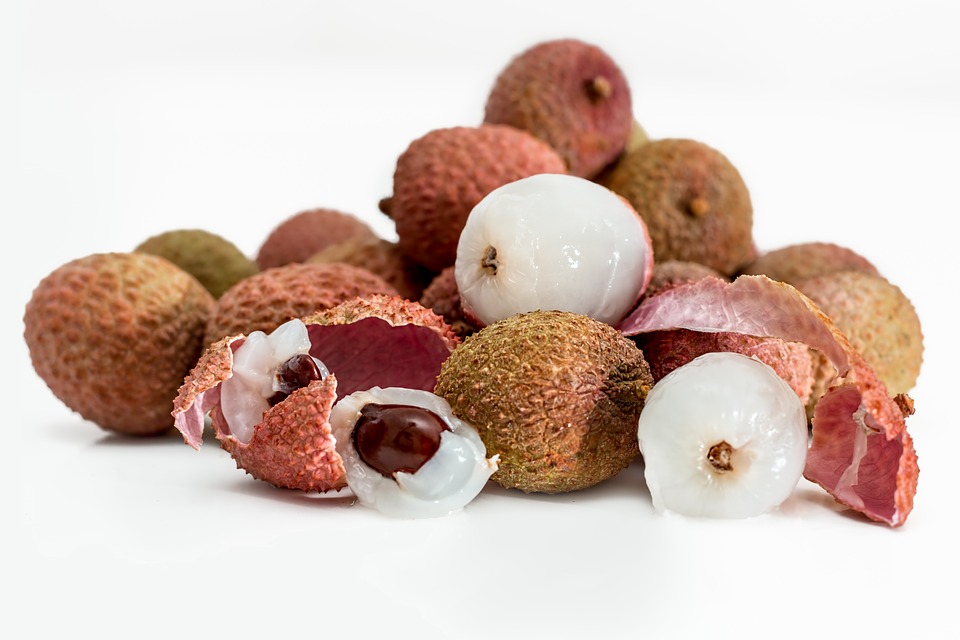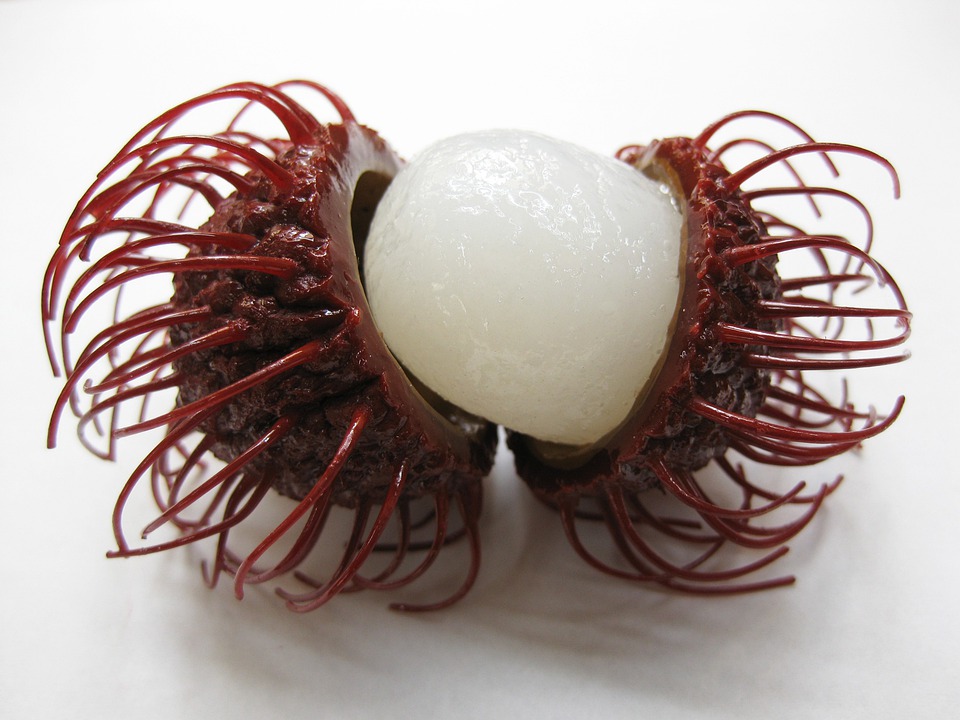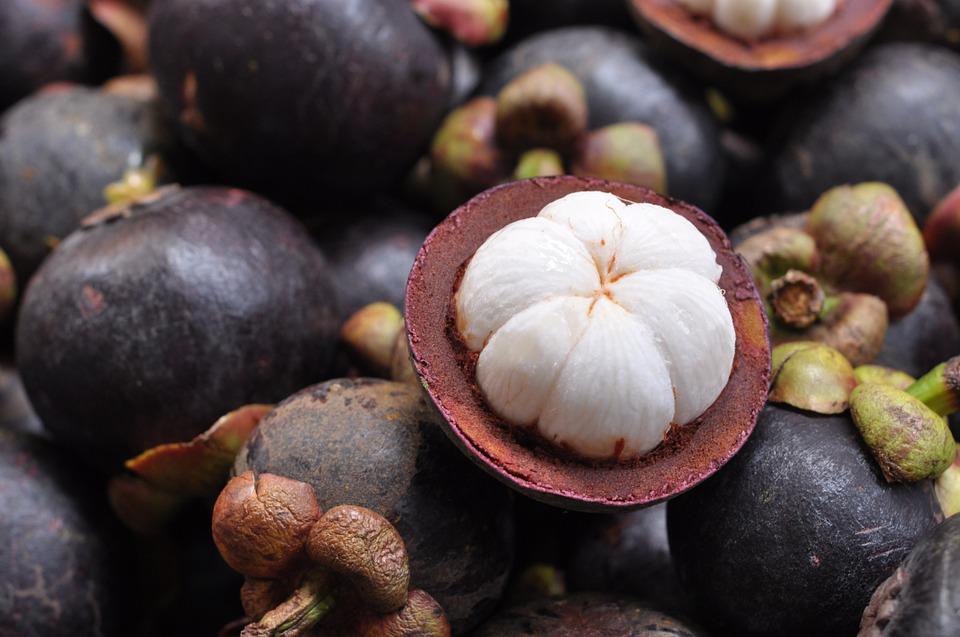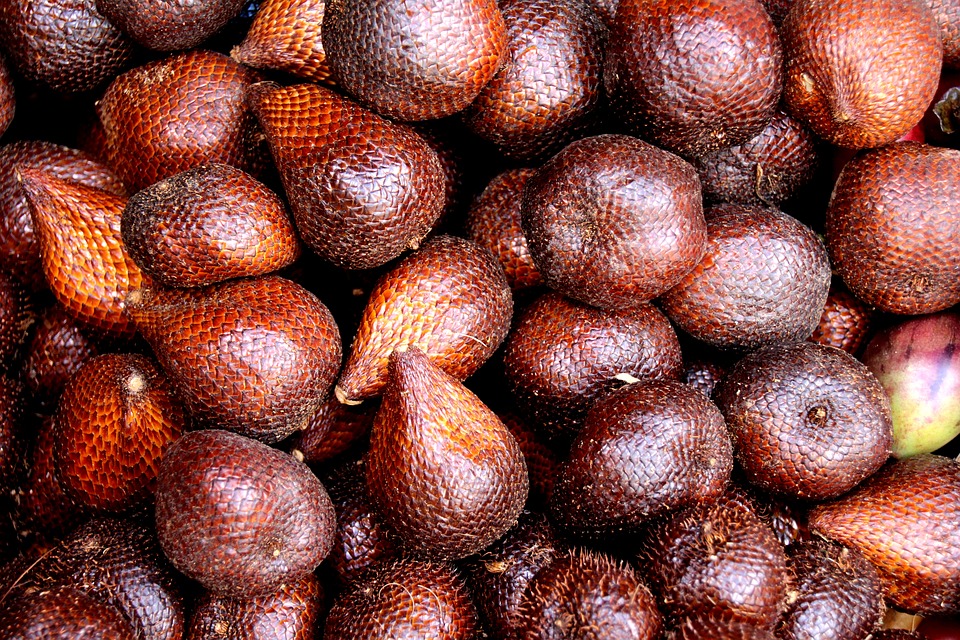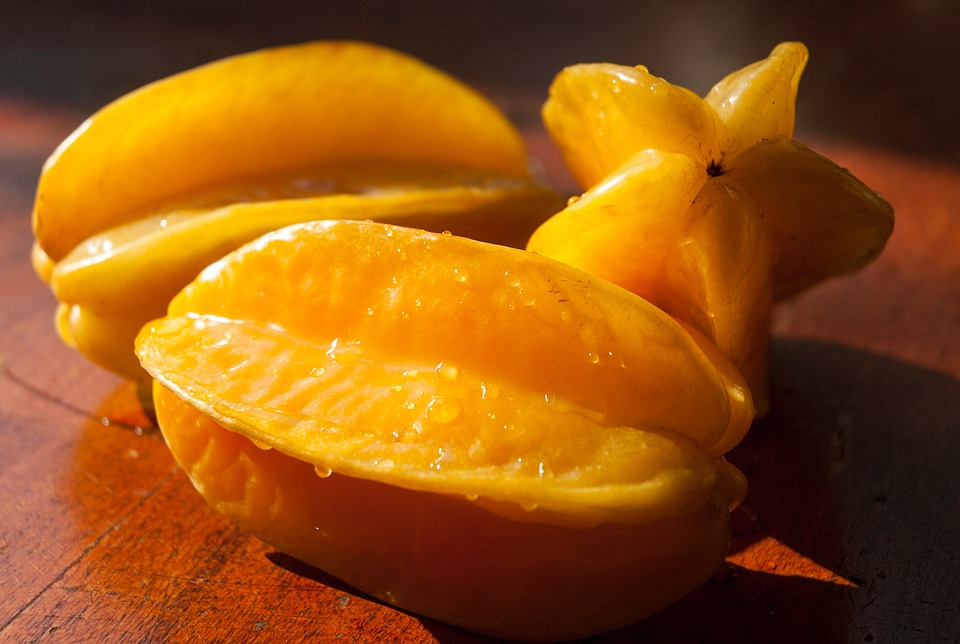We see a variety of fruits displayed in the local markets every day, from apples, bananas, guavas, pineapples, watermelons and the list goes on and on. However, eating same type of fruit on a regular basis can be boring unless you try new recipes with them every day (which is practically not easy). If you can relate to this scenario and are willing to experiment something new; this post is created for you!
Here, we will discuss 20 exotic fruits from across the globe that are not just delicious in taste, but they are beneficial for your health as well. You might not find them on the local stores because they are delicate, rare and sometimes expensive. However, if you happen to come across any of these fruits; don’t forget to try out at least once in a lifetime.
1. Acai
The first on the list is a tropical stone fruit, which is found in Central and South America, grown on the palm trees.
- The fruit is round, measuring around 1 inch.
- Its outer skin is dark, purple-black.
- Acai is basically a cross of blueberry and grape, but it is comparatively smaller and not sweet in taste like them.
- It is rich in antioxidants that are vital for neutralizing free radicals present in the body, and also helpful in defending the cell from any damage.
- The fruit lowers cholesterol level in the body and plays a great role in boosting brain function.
Nutritional Content of Acai
One serving of acai can provide the following nutrition to you:
| Calories | 40 |
| Fiber | 3 grams |
| Carbs | 3 grams |
| Protein | 1 gram |
| Fat | 3 grams |
| Potassium | 60 milligrams |
| Calcium | 20 milligrams |
| Iron | 0.36 milligram |
2. Buddha’s Hand
As weird as the name is; this exotic food is known as one of the oldest citrus fruits in the world. Buddha’s hand is basically an ancestor of lemons and oranges and it is believed to be originated from Northeastern India or China.
- The fruit grows on the trees covered in thorns and has long branches.
- It is traditionally used to make perfumes by Chinese and Japanese because of its high fragrant quality.
- Buddha’s hand aids respiratory conditions due to the presence of mild alcoholic compound in its composition.
- It works as an effective expectorant, and certainly one of the quickest remedies for cough with catarrh and phlegm.
- The fruit improves breathing and controls blood pressure as well.
Nutritional Content of Buddha’s Hand
Nutrients per serving of Buddha’s Hand are:
| Calories | 29 |
| Fat | 0.3 grams |
| Carbs | 9.3 grams |
| Sugar | 2.5 grams |
| Protein | 1.1 grams |
| Calcium | 36 milligrams |
| Phosphorus | 16 milligrams |
| Iron | 0.55 milligram |
In addition to this; it also has traces of the vitamin A, vitamin C, vitamins B1, B2 and B3.
3. Canistel
Also named as eggfruit; Canistel is a native fruit of Southern Mexico that is cultivated in Asia, Africa and America.
- It is either orange or yellow in color.
- The width of this fruit is around 7 cm, whereas its length is 28 cm.
- Its taste is usually sweet, and it is often combined with milk products to make milkshakes and smoothies.
- Canistel helps in supporting and boosting immune system as it is a great source of vitamin C or ascorbic acid.
- It is good for eyes as well.
- You can also obtain the vitamin A from this citrus fruit just like oranges and lemons.
Nutritional Content of Canistel
The following chart shows the nutrition value of 100 grams (one cup) of Canistel.
| Calories | 138.8 |
| Fiber | 10 grams |
| Fat | 13 grams |
| Proteins | 2.5 grams |
| Carbs | 36.7 grams |
| Iron | 92 milligrams |
| Calcium | 26.5 grams |
It is also rich in vitamins, like B1, B2, B3, vitamin A and vitamin C.
4. Custard Apple
The other name of custard apple is Cherimoya. It is an oval-shaped exotic fruit that is loved for its pleasant aroma, sweet taste, juicy flesh and rich flavor.
- It is believed that custard apple is originated from the South America’s Andes Mountains.
- The fruit is served chilled usually just like custard, and you eat it with a spoon.
- The taste of Cherimoya is pretty much similar to tropical fruits, like pineapple and banana.
- It contains antioxidants that fight free radicals and boost immunity in the body to deal with chronic illnesses, such as cardiovascular conditions.
- The fruit also has carotenoids in its composition that helps in reducing the risk of heart issues and improving eye health.
- It also has a positive effect on mood and mental health.
Nutritional Content of Custard Apple
A serving (100 grams) of Carotenoids aka custard apple offers:
| Calories | 101 |
| Fat | 0.6 grams |
| Carbs | 25 grams |
| Fiber | 2.4 grams |
| Protein | 1.7 grams |
| Iron | 0.71 milligram |
| Potassium | 382 milligrams |
| Sodium | 11 milligrams |
5. Goji
This small exotic fruit is also referred to as wolfberry. In its native Tibet; people know it as ‘the laughing berry.’
- They are usually available in dried or powdered form.
- You can utilize them in supplements or juicy blends.
- The berries are popular for their sweetness with a hint of sour taste and the bright red color.
- Gogi berries aim to promote healthy skin.
- They are a rich source of a phytochemical named as beta-carotene, which is known for promoting healthy skin.
- The ingredient is a vital part of skin creams as well.
- Besides, they are significant in reducing skin aging signs, soothing skin irritations and managing sun burns.
Nutritional Content of Goji Berries
This chart is displaying nutrients of 28 grams (one ounce) of dried Goji berries.
| Calories | 98 |
| Carbs | 21.6 grams |
| Fiber | 3.64 grams |
| Sugar | 12.8 grams |
| Fat | 0.1 gram |
| Protein | 4 grams |
In addition to this, these berries are loaded with minerals and vitamins, including vitamin C, vitamin A, selenium, copper, iron, riboflavin and calcium.
6. Durian
This tropical fruit is enclosed in a thick shell and green scales with brown tips. The taste of Durian is a bit strange; it is a combination of savory, sweet and creamy at a time.
- It has a pungent odor. Therefore, it is banned eating or taking durian on different types of public transports in Japan and Thailand.
- The fruit was found in Southeast Asia and countries like Singapore and Malaysia, etc.
- It has high fiber content and unsaturated fat present in its composition.
- Durian is beneficial for resolving heart issues and reducing low-density lipoprotein cholesterol (LDL-C).
- It deals with skin pigmentation, fine lines and wrinkles as well.
Nutritional Content of Durian
As per the United States Department of Agriculture; 243 grams (one cup) of the durian (frozen or fresh) contain the following nutrients:
| Calories | 357 |
| Fat | 13 grams |
| Fiber | 9.2 grams |
| Protein | 3.6 grams |
| Carbs | 66 grams |
The fruit contains the vitamin C, vitamin B6, thiamine, riboflavin, copper and potassium as well.
7. Jackfruit
Known as the world’s largest tree-borne tropical fruit; Jackfruit is around 60 cm (2 feet) tall and weighs up to 18 kg (40 pounds). This exotic fruit is native to India (Southern part) and it is now cultivated in several tropical countries.
- Its shape is oval, and the taste is sweet, similar to pineapples and bananas.
- Jackfruit is considered as a great alternative to meat for vegetarians.
- It reduces blood pressure and relevant issues.
- It has a low GI (glycemic index), which helps in controlling blood sugar.
- This fruit is a great source of potassium as well.
Nutritional Content of Jackfruit
This value is calculated for a cup of raw jackfruit.
| Calories | 157 |
| Fat | 1.06 gram |
| Carbs | 38.36 grams |
| Protein | 2.84 grams |
| Fiber | 2.5 grams |
| Magnesium | 48 grams |
| Potassium | 739 milligrams |
| Vitamin C | 22 milligrams |
| Sugar | 31.48 grams |
8. Longan
This healthy tropical fruit is similar to another exotic fruit named as Lychee (will read about it later).
- Its size can be as big as a large grape; while the shape is round.
- The fruit grows in the form of cluster on trees.
- It was found in Southeast China and currently cultivated in Sri Lanka, Taiwan, India, Bangladesh, Philippines, Malaysia, Cambodia and Mauritius.
- It has a tough, tan shell with white flesh covering the seed.
- Longan is also known as dragon’s eye.
- It leaves a positive impact on the skin by eliminating aging spots, reducing scar’s appearance and enhancing complexion.
- The presence of antioxidants, vitamin B and vitamin C minimizes skin dryness, improves cardiovascular conditions and prevents health issues.
Nutritional Content of Longan
The value is for 20 pieces (one serving) of Longans:
| Calories | 38 |
| Protein | 1 gram |
| Fat | 0 gram |
| Sugar | 0 gram |
| Carbs | 10 grams |
| Fiber | 1.1 grams |
Besides, Logan is enriched with the vitamin C, vitamin B2 and potassium.
9. Chayote
Here comes a member of squash family. Discovered in Mexico, some other names for Chayote are: mirliton, chuchu, chocho, choko and tayota.
- You can either eat it raw, use in making salsa or slightly cook it before serving.
- The Chayote fruit is rich in vitamin C, amino acid, antioxidants, carotenoids and polyphenols.
- It helps a lot in fighting common cold symptoms and strengthening immune system of the body.
Nutritional Content of Chayote
The value is for 100 grams (one serving) of Chayote.
| Calories | 19 |
| Fat | 0.13 grams |
| Carbs | 4.51 grams |
| Sugar | 1.66 grams |
| Fiber | 1.7 grams |
| Protein | 0.82 grams |
| Calcium | 17 milligrams |
| Iron | 0.34 milligram |
| Magnesium | 12 milligrams |
| Phosphorus | 18 milligrams |
| Potassium | 125 milligrams |
10. Lychee
Here comes a rounded tropical fruit that taste pretty much like strawberry but is more sweeter.
- It is mostly grown in Vietnam, Taiwan and China.
- Lychees can be consumed fresh or you can make juice, ice-cream and jelly out of it.
- Its skin is leathery pink that should be removed before eating.
- This fruit aims to boost immunity, improve digestion, stimulate peristaltic motion of intestine muscle and reduce the chances of constipation.
Nutritional Content of Lychee
100 grams of fresh lychees contain:
| Calories | 66 |
| Protein | 0.8 grams |
| Sugar | 15.2 grams |
| Fiber | 1.3 gram |
| Carbohydrates | 16.5 grams |
| Fat | 0.4 grams |
Besides, it also has several vitamins and minerals, such as vitamin C, copper, potassium.
11. Dragon Fruit
Also popular as Pitaya, Dragon fruit was found in Central America and today it is also produced and grown in Hawaii, New Zealand, Australia, Vietnam and Thailand.
- Its size is as big as a pomegranate and has an animated appearance with bright pink skin and large, green scales.
- The flesh is white in color with scattered black, tiny seeds.
- The fruit is loaded with fiber, iron, magnesium and a bunch of antioxidants to provide protection to the cells.
- It can aid in reducing fatty liver and improving insulin resistance in obese individuals.
- It contains high quantity of prebiotic fiber, which impacts the growth of gut bacteria.
- Antioxidants are also helpful in reducing high blood pressure, diabetes and heart conditions.
Nutritional Content of Dragon Fruit
A serving (100 grams) of this exotic fruit has:
| Calories | 60 |
| Fiber | 3 gram |
| Carbohydrates | 13 grams |
| Fat | 0 g |
| Protein | 1.2 gram |
12. Rambutan
The appearance of Rambutan is usually compared to sea urchins because of its hairy green, yellow and red shell.
- The fruit is also related to lychees due to identical taste and looks.
- It is native to Malaysia and Indonesia, but also grown in the states of South India: Tamil Nadu and Kerala.
- It contains vitamin C as well that is beneficial for hair, skin and nail health, whereas the presence of copper promotes the production of red blood cells.
- The skin and seeds of Rambutan have a great quantity of antioxidants that cure chronic diseases and fights aging symptoms.
Nutritional Content of Rambutan
100 grams of this exotic goodness have:
| Calories | 68 |
| Protein | 1 gram |
| Fiber | 3 gram |
| Carbohydrates | 16 grams |
| Fats | 0.3 gram |
13. Camu Camu
You may confuse this nutrient-rich exotic fruit with cherries because of its shape and color. However, it has a sour taste, containing two to three large seeds.
- It can be consumed raw or you can combine its powder in smoothies and juices.
- Another way is to garnish in salads and puddings for taste enhancement.
- Camu Camu is basically a native to Peru, Colombia, Venezuela and Brazil. However, it grows in the Amazon rain forests of South America as well.
- It helps in boosting immune system and promoting collagen formation, which is significant for healthy muscles, skin and bones.
- It is also beneficial in reducing inflammation in the body due to the presence of antioxidants.
- The fruit is said to be effective for weight loss as well.
Nutritional Content of Camu Camu
100 grams of this fruit have:
| Calories | 17 |
| Water | 94.1 grams |
| Protein | 0.4 gram |
| Fat | 0.2 gram |
| Vitamin C | 2145 mg |
| Carotenoids | 355 micrograms |
| Calcium | 15.7 mg |
| Magnesium | 12.4 mg |
14. Mangosteen
Known for its unique flavor and appearance; Mangosteen is usually called the queen of tropical fruits.
- It has a round shape, purple-colored skin and juicy, white flesh.
- The fruit has used in making Asian medicine for thousands of years.
- It basically belongs to China, but you can find it in Southeast Asian countries as well, including Thailand, Malaysia, Indonesia and Cambodia.
- Mangosteen offer essential nutrients that are vital for the development of a human body.
- It contains vitamin C and powerful antioxidants to fight against cancer cells.
- Besides, it is loaded with several minerals, such as copper, manganese, magnesium, etc.
Nutritional Content of Mangosteen
1 cup of this delicious fruit offers:
| Calories | 143 |
| Magnesium | 60 gram |
| Copper | 70 gram |
| Manganese | 100 gram |
| Vitamin C | 90 gram |
| Protein | 1 gram |
| Fat | 1 gram |
| Fiber | 3.5 gram |
| Carbohydrates | 35 grams |
15. Sapodilla
Here comes the candy of the fruit world! Yes, that’s true. The brown, teardrop-shaped exotic fruit is widely known by this name due of its toffee-like, sweet taste.
- Native to Central America, Mexico and Caribbean; it is also cultivated in Asia.
- The other name of Sapodilla is Sapota.
- It is high calorie exotic fruit that is packed with antioxidants, vitamin A, vitamin C, vitamin A, folate, niacin and iron.
- Eating Sapodilla is like consuming multivitamins regularly.
- It has a sweet taste naturally; you can top it on a bowl of yogurt or oatmeal to enhance taste.
Nutrition Content of Sapodilla
170 grams (6 oz.) of Sapodilla have following nutrients:
| Calories | 141 |
| Carbs | 34 grams |
| Protein | 0.7 grams |
| Fat | 1.8 grams |
| Fiber | 9 grams |
| Folate | 6% of DV |
| Iron | 8% of DV |
16. Jujube
Another name of Jujube is Chinese date, and this exotic fruit is loved across the globe because of its tangy, sweet flavor and countless health benefits. Although it is produced in China, but you may find it in different parts of the world.
- It has a chewy, dark red texture and often used in dried form.
- It is utilized in candies, and you can add it in the desserts as well.
- This fruit is loaded with antioxidants, mainly flavonoids to reverse the harm of free radicals.
- It enhances quality of sleep and deals with anxiety.
- The high fiber content in its composition aids digestion issues.
Nutritional Content of Jujube
The value is for 100 grams (one bowl serving) of raw Jujube.
| Calories | 79 |
| Potassium | 50 grams |
| Fiber | 10 grams |
| Carbohydrates | 20 grams |
| Protein | 1 gram |
17. Pummelo
Pummelo belongs to a citrus fruit family and was discovered in Southeast Asia. Currently, it is grown in China on a big scale.
- It has been a part of Asian medicine and used as home remedies till date.
- The taste of this exotic fruit is more on a sweeter side, but some people find it similar to the taste of a grapefruit.
- It has high value of folate, vitamin C and potassium.
- Pummelo is good for bone health, digestive system and several diseases, including cancer.
Nutritional Content of Pummelo
One whole Pummelo fruit offers you the following:
| Calories | 231 |
| Protein | 4.6 grams |
| Sugar | 12.5 grams |
| Fiber | 6.1 gram |
| Carbohydrates | 59 gram |
| Sodium | 6.1 mg |
| Fat | 0.2 gram |
18. Kiwano
Known as horned melon or African Cucumber; Kinwano looks as an alien fruit and its inside is even weirder.
- This exotic fruit is related to melon family, and its taste is more like a combination of zucchini, cucumber and kiwi.
- It contains several antioxidants to prevent free radicals, reduce inflammation and treat chronic diseases.
- It helps in red blood cells production due to the high quantity of iron present in its composition.
- As Kiwano contain 88% of water, so it is extremely beneficial for the body in terms of providing hydration.
- You can use it in salads, yogurts or add to your smoothies without the guilt of gaining extra lbs. as the fruit is low in calories and enriched with minerals.
Nutritional Content of Kiwano
One serving of this fruit has:
| Calories | 92 |
| Calcium | 30 gram |
| Potassium | 50 gram |
| Zinc | 70 gram |
| Phosphorus | 80 gram |
| Vitamin C | 180 gram |
| Fat | 2.6 gram |
| Protein | 3.7 gram |
| Carbohydrates | 16 gram |
19. Salak or Snake Fruit
Salak is also named as Snake fruit because of having a ‘snake like skin’ with scales on the outer side. Its flesh is sweet as pineapple though.
- It is originated from Indonesia and grows on a short-stemmed palm called Salak tree. Now, It is also cultivated in Queensland, Australia.
- From inside, this exotic fruit has a three clove like structure and it is as crispy as an apple.
- Regardless of the size, the snake fruit is packed with several health benefits.
- It is a great option for vegans as it contains beta-carotene, fiber, iron, potassium, vitamin C and protein.
- Salak fruit is good for brain health as well because it helps in improving memory and enhancing cognitive function.
- You can use them as a snack between your meal or add to your salads.
Nutritional Content of Salak
One serving of Salak has:
| Vitamin B2 | 0.2 milligram |
| Iron | 3.9 milligrams |
| Carbohydrates | 12.1 milligrams |
| Vitamin C | 8.4 milligrams |
| Phosphorus | 18 milligrams |
| Calcium | 38 milligrams |
| Protein | 0.8 gram |
| Fiber | 0.3 gram |
| Fat | 0.4 gram |
20. Star Fruit (Carambola)
The last exotic fruit on the list is unique on its on because of its star like shape. It is loaded with several essential nutrients that are needed for a human body to grow well.
- It hails from Southeast Asia and found in different parts of the world today.
- This sweet/tart fruit has a taste of an apple, citrus and plum.
- It changes its color to ‘golden yellow’ upon ripping.
- It has 40 calories per piece, but a plenty of vitamins C and fiber.
- You just need to wash it before eating, no need to de-seed or peel.
- Note that, star fruit is not suitable for people with kidney issues as it contain oxalic acid that forms kidney stones.
Nutrition Content of Star Fruit
132 grams (1 cup) of star fruit contains the following nutrients.
| Calories | 41 |
| Sodium | 2.6 mg |
| Fat | 0.4 gram |
| Fiber | 3.7 gram |
| Carbohydrates | 8.9 grams |
| Protein | 1.4 gram |
| Sugar | 5.3 gram |
Summary
Everything organic and natural comes with some health benefits, and same applies to the above-listed exotic fruits. They are not just unique in their appearance and composition, but their nutritional benefits are noteworthy as well. Adding these in your daily diet can benefit you and your kids in the long run.
You might not be familiar with most of these rare types of fruits, but they are worth trying at least once in a lifetime. So, next time if you see any of the exotic goodness around, don’t forget to grab one to try out!



